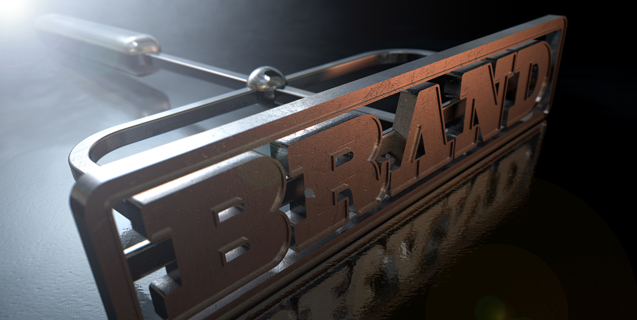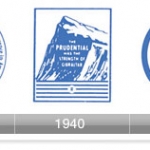What is branding, and should I worry about it?
Branding is a term you hear thrown about by advertising agencies, marketing agencies and big businesses. They talk about “branding,” ” brand equity” and “brand loyalty.
But is this something a small business needs to be concerned about?
In a word, yes.
One could say that branding underlies all of your marketing, advertising, promotion and sales efforts. If you don’t pay attention to your branding, these actions may well fail.
So what is branding?
Branding is basically how people think and feel about your product or your company. It has to do with your reputation, your image, how you are perceived. If people have a good impression of your company and its products, they’ll continue to buy from you. If they have a negative impression, they won’t.
And yet the idea of branding can be somewhat vague and intangible. So let’s break it down.
What are the factors of good branding?
- Your positioning: In marketing terms, your positioning means where you stand in relation to your overall market and your competitors. Are you the cheapest solution? Do you have the highest quality? Are you faster than others in your business? Do you have greater attention to detail? Think about what you offer that your competitors don’t. What can you promise that your competitors can’t? Determining these things will give you your unique position in the market, your “unique selling proposition.”
- Your personality: Are you the brash, innovative upstart, or the stable, reliable mainstay? Is your company primarily feminine (fashion, home decor, etc.) or masculine (trucking, manufacturing, etc.)? Are you fun-loving and spirited (an entertainment company) or serious and focused (real estate or insurance)? If your company were a person, what would they be like?
- Your story: How did your company get where it is? How did it start? What made you decide to provide the products or services that you do? How did you want to do things differently than others in your field? All of this influences your company’s image and personality.
- Your people: Do your people understand the company they are working for, its positioning in the market, its personality and its history? Do they embody the company spirit in all that they do? Are they committed to upholding company values?
- Your name: Naming a product or a company is a large subject, and it deserves an article of its own. An ideal name should embody your brand position and brand personality. It should be easy to remember, easy to understand, and easy to pronounce. It should be “sticky” – stick in people’s minds. And in today’s internet age, the name should take advantage of commonly searched keywords.
- Your logo: Here’s where we get into the technical mechanics of branding. Your logo should embody, as closely as possible, your company personality and market position. If your market position is one of quality, for instance, the logo should communicate excellence. If your company personality is feminine and nurturing, the logo should reflect that. A good logo designer will get familiar with your company and ask a lot of questions before beginning work. And once you have your logo, use it everywhere, and use it consistently. Don’t change it around or do different versions of it or different colors.
- Your graphics and color choices: Choose a limited palette of colors to represent your firm. You have the color or colors of your logo, and you’ll want to choose a selection of colors that can go with this well. Your graphic designer can help with this selection. A conservative company, for instance, might use a range of blues and greys. An entertainment company would want to use bright, vibrant colors. Use these colors consistently in all of your brochures, signage, websites and so on. Decide what kinds of graphics, illustrations, and photographs you will use. The point is that people will get used to the “look” of your material and it will all look like it belongs together. When they see an ad or a web page or a poster, they know it’s yours at a glance.
- Your taglines and slogans: These terms often get confused. A tagline is a short, powerful phrase that encapsulates your market position and your unique selling proposition. It telegraphs to people what your company (or your product) is all about. It is the verbal equivalent of your logo and often appears right under your logo. Taglines usually don’t change over time. For instance, BMW’s “The ultimate driving machine,” ebay’s “The world’s online marketplace” or Disneyland’s “The happiest place on earth.” Taglines are descriptive. A slogan is a short catchphrase, sometimes used for a specific product or campaign. It usually says little about the company or product, but is designed to elicit an emotional response. Examples are Nike’s “Just do it,” Apple’s “Think different,” or McDonald’s “I’m lovin’ it.” Slogans are evocative. The slogan should forward your company’s personality.
- Your written copy: Develop a consistent “voice” for your company that encapsulates the brand personality and use this voice in all of your written communications – brochures, sales literature, websites. Is your company “voice” casual and warm? Informal and folksy? Factual and no-nonsense? In Step 2 we asked, “if your company was a person, what would they be like?” In this step, we ask, “what would they sound like?” Think of Sam Elliott as the voice of Chevy trucks, Matthew McConaughey promoting Lincoln’s luxury cars, or Orville Redenbacher promoting his popcorn. Each one has a distinctive personality that embodies the personality of the brand.
And the most important thing? Be consistent. Once you’ve decided on these things, stick with it. Don’t change these factors. Use your branding everywhere – website, Facebook, business cards, brochures, trade show displays. It takes time to build your brand. Eventually people get used to seeing your name, your logo, your promotion and websites. They begin to recognize and trust your company and your products. That’s building brand equity.
And when you’ve built up that recognition and trust, people will buy your products or services over and over again. That’s brand loyalty.
It takes time and patience to build a brand. Make your brand decisions wisely, then stand by them.
What are your experiences with branding?









Pingback: How to Name Your Startup - SkyHawk Studios